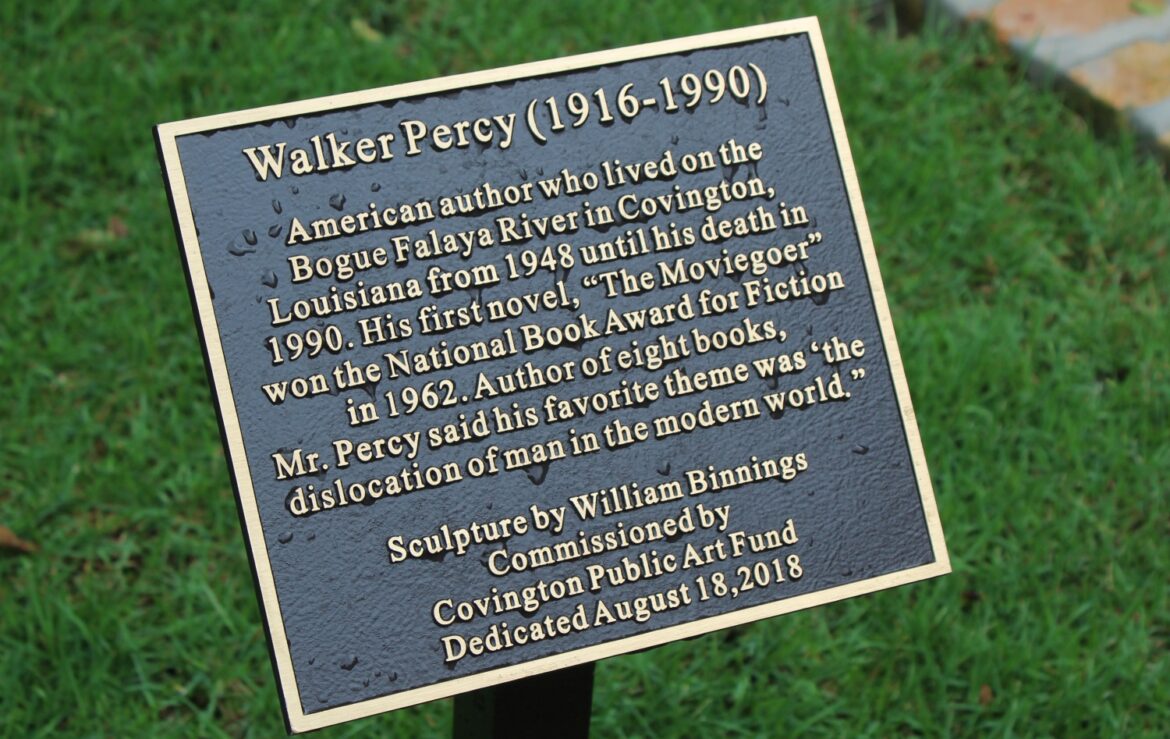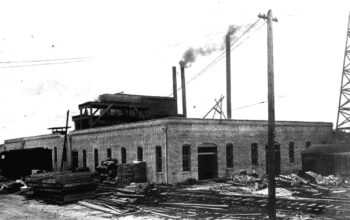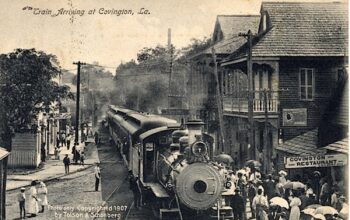Covington History segment provided by local historical writer Ron Barthet. View Ron’s blog Tammany Family here.
This article has been broken up into 4 parts for ease of reading.
Historical Markers
According to the Historical Marker Project website, there are 45 historical markers in St. Tammany Parish. They share a variety of historical highlights across the area, giving us an idea of the people and places that contributed to early St. Tammany. Here is their list.
Historical Markers of St. Tammany – Part 1
Historical Markers of St. Tammany – Part 2
Historical Markers of St. Tammany – Part 3
Historical Markers of St. Tammany – Part 4
Courthouse Square and Historic Oaks Historical

Courthouse Square and Historic Oaks These graceful oaks were planted hundreds of years ago, predating the street plan of 1813. The WWI monument seen in the image on the right is all that remains at this site following the demolition of the old courthouse in 1958.As the parish (county) seat since 1819, Covington was the center of commerce, industry and government on the north shore for many years. The first courthouse was built on the east side of the Bogue Falava River at what is now called Claiborne Hill. The location was later moved to this site where a more permanent brick courthouse was built in 1885. It served until it was replaced by the “modernized structure” which ws completed in 1960. The St. Tammany Parish Justice Center was constructed just up the street in 2003.
The Covington Bank and Trust Building Historical
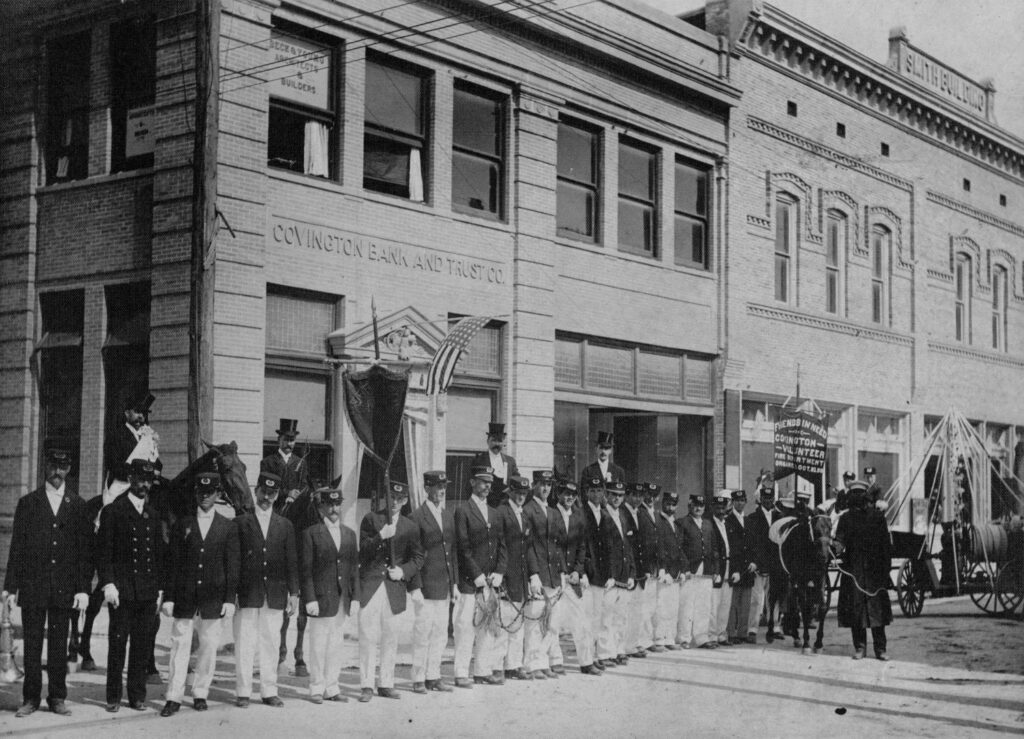
Probably the most significant economic development, not only for Covington but for the parish as a whole, was the establishment of the bank. The Covington Bank & Trust was established in these original quarters. It is the oldest commercial building in Covington.Two fires destroyed most buildings built before 1880. Rebuilt shortly after the Great Fire of 1898, the downtown buildings provide a beautiful example of turn-of-the-century commercial architecture. In 1909, there was a fireman’s parade, which included several fire companies. These organizations united to form the Covington Fire Department.
Lake Pontchartrain Causeway Bridge Historical

The original 23.86 mile-long structure, which now carries the Southbound traffic, was designed by the firm of Palmer & Baker. When opened in 1956, the structure was the longest bridge in the world by more than 15 miles. In building the bridge, which took just fourteen months, assembly-line, mass-production methods were utilized for the first time in the construction of a bridge. It was designed to employ hundreds of identical, hollow concrete pilings, concrete caps, and pre-stressed deck sections manufactured at an on-shore facility and barged into place. Engineering News-Record acclaimed the project to be “a bold venture requiring unusual foresight, ingenuity and resourcefulness.”
Opened: August 30, 1956
Dedicated: October 18, 2003
War of 1812 Memorial, a War Memorial
These six men of the 2nd Division 13th Regiment Louisiana Militia fought at the Battle of New Orleans during the War of 1812 and are buried in unmarked graves Auguste Badeaux, Samuel Ott, William Cooper , Charles Parent, Jr. James Johnson and Lawrence Sticker
Civil War Earthworks Historical
One of two lines of fortifications excavated from January to March 1864 by Union forces “on fatigue duty” soon after their capture of Madisonville. Intended to defend the town from Confederate attacks coming from the surrounding countryside. The earthworks originally consisted of a trench protected by an “abatis” or barrier of felled trees with sharpened ends laid pointing out along its edge. The line meandered from approximately Rene and Covington Streets in a westerly direction to about this point on Johnson Street. Property records for the lot adjacent to this site mention “breastworks” on the land from the 1870s forward. Madisonville was occupied to obtain war supplies in the form of timber, lumber, logs, turpentine, tar and bricks for the federal Department of the Gulf.
Christ Episcopal Church Historical
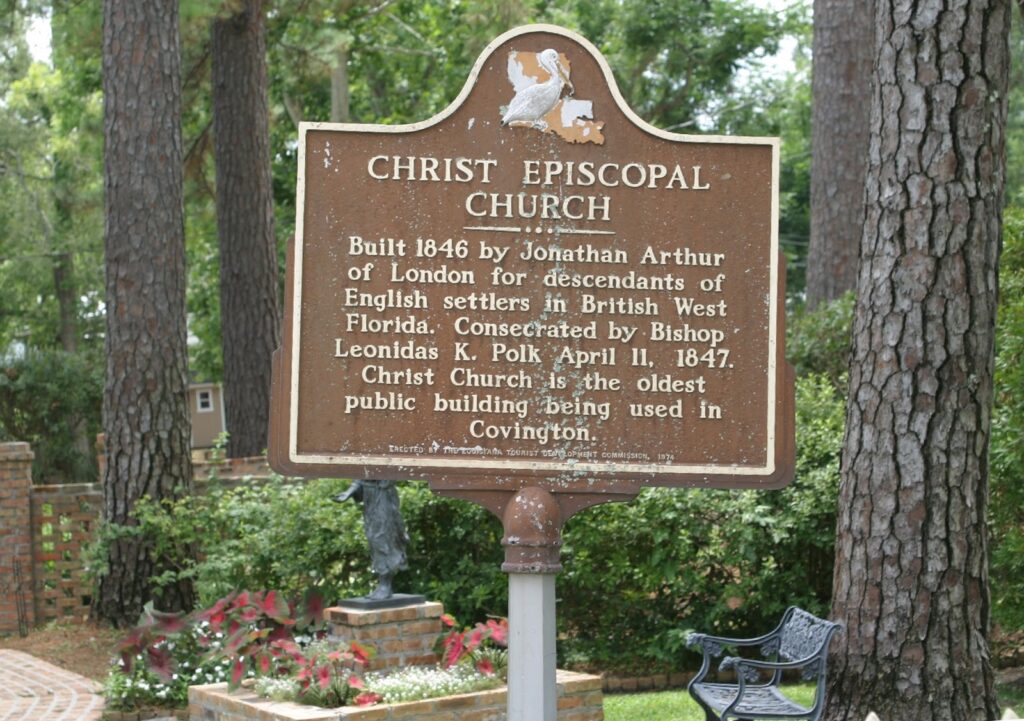
Built 1846 by Jonathan Arthur of London for descendants of English settlers in British West Florida. Consecrated by Bishop Leonidas Polk, April 11, 1847. Christ Church is the oldest public building being used in Covington.
Lake Pontchartrain Causeway Historical
At 23.87 miles long, the Causeway is the world’s longest bridge over water. The first span was completed in August 1956. Due to increased traffic, a second span opened in May 1969. The Causeway piloted major construction of prefabricated, prestressed concrete bridges in the United States. It is supported by more than 9,000 pilings. Construction of the Causeway expanded the Greater New Orleans area to include the northshore of Lake Pontchartrain.
Columbia Street Landing Historical

An active harbor where schooners and steamers once docked. Established in the early 1800’s, providing a vital link to other river cities transporting cotton, lumber, bricks, whiskey and mail. Oyster luggers brought fresh oysters regularly through the late 1930’s. Many early settlers of the community arrived at this destination.
West Florida Republic and St. Tammany Parish Historical
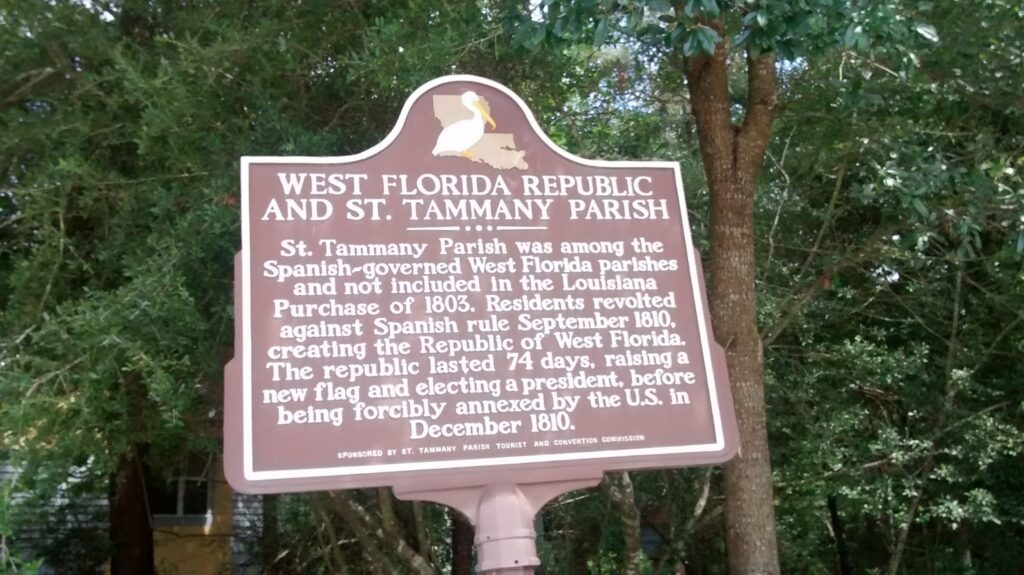
St. Tammany Parish was among the Spanish-governed West Florida parishes and not included in the Louisiana Purchase of 1803. Residents revolted against Spanish rule September 1810, creating the Republic of West Florida. The republic lasted 74 days, raising a new flag and electing a president, before being forcibly annexed by the U.S. in December 1810.
Madisonville Historical

Originally called “Cokie” (from Coquille) because of the abundance of shells in the area. Renamed for Pres. James Madison, c. 1811. Site of Navy Yard in early 1800’s. According to legend, Gen. Andrew Jackson, enroute to New Orleans in Nov. 1814, stopped here at the home of Gen. David B. Morgan.
Saint Peter Church Historical
L’Abbé Jouanneault built the predecessor of St. Peter Church on the Bouge Falaya in 1843. The first resident pastor was Fr. J.M. Giraud, appointed in 1863 to serve Covington, Madisonville, Bedico, and Abita Springs. In 1892 Fr. Joseph Koegerl, pastor, who was also Canon of St. Louis Cathedral, built a new church and rectory on Massachusetts St. The Jefferson Ave. church was erected in 1940 during the pastorate of Fr. Aemillian Egler, O.S.R. Two Benedictines have served the parish continuously since 1922.
Battle of Lake Pontchartrain Historical
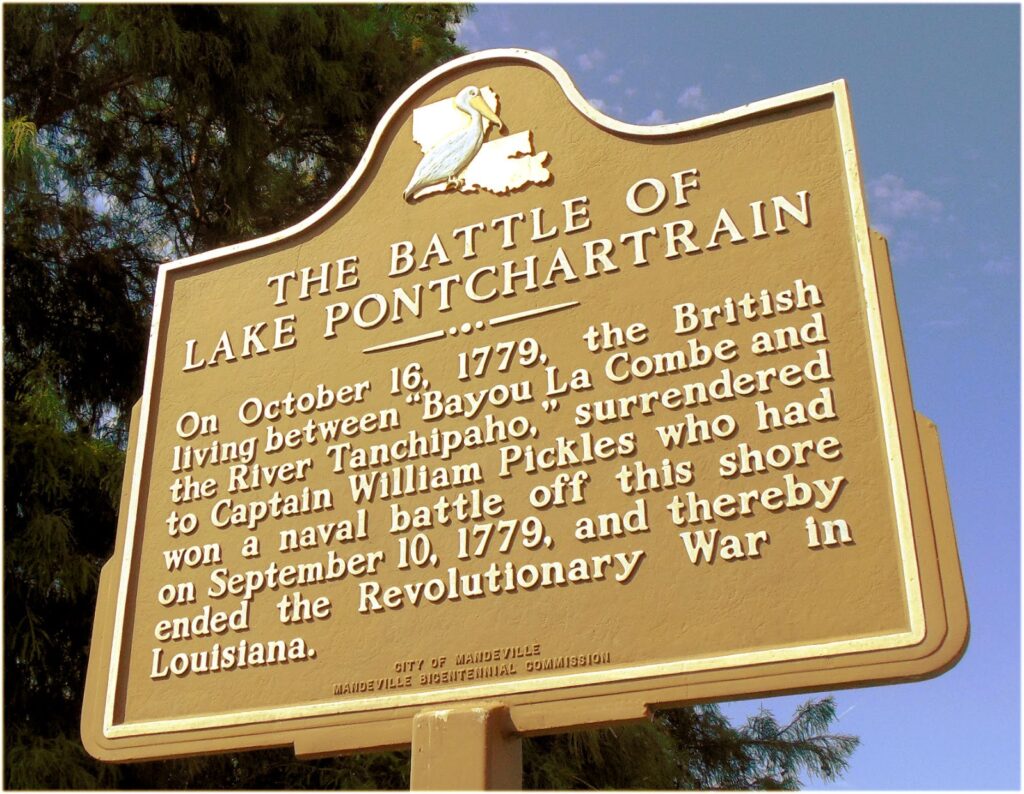
On October 16, 1779, the British living between “Bayou La Combe and the River Tanchipaho,” surrendered to Captain William Pickles who had won a naval battle off this shore on September 10, 1779, and thereby ended the Revolutionary War in Louisiana.
Public “Ox Lot” Parking Historical
Unique to Covington’s downtown business district and a credit to our forefathers, our original town grid layout allowed for public squares in the middle of each block for the purpose of trade and commerce. Farmers would bring their oxen-laden carts to town loaded with wares and conduct business in these designated center block locations. Traditionally called “ox lots” and largely responsible for Covington’s designation as a national historic district, today’s use provides free public off-street parking for downtown visitors and employees.
Abita Springs Historical
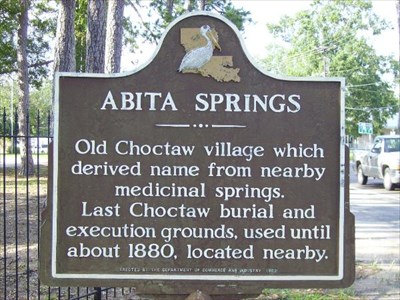
Old Choctaw village which derived name from nearby medicinal springs. Last Choctaw burial and execution grounds, used until about 1880, located nearby.
Our Lady Of The Lake Church Historical
Early in the eighteenth century, Catholic missionaries evangelized Choctaw, Chinchuba and other Indian tribes and sub-tribes on the northern shore of Lake Pontchartrain, among pioneer priests was Fr. Michael Baudouin, S.J., superior of the Jesuit Mission in Louisiana and Vicar General to the Bishop of Quebec, Canada. Fr. J. Outendrick was the first resident pastor when the Mandeville Congregation was organized in 1850. Fr. Adrien E. Rouquette, “Chahta-Ima,” also labored here and elsewhere in St. Tammany Civil Parish. The present church was dedicated in 1953 during the pastorate of Fr. Canisius Bluemel, O.S.B., one of several Benedictines serving here since 1890.
Walker Percy Historical
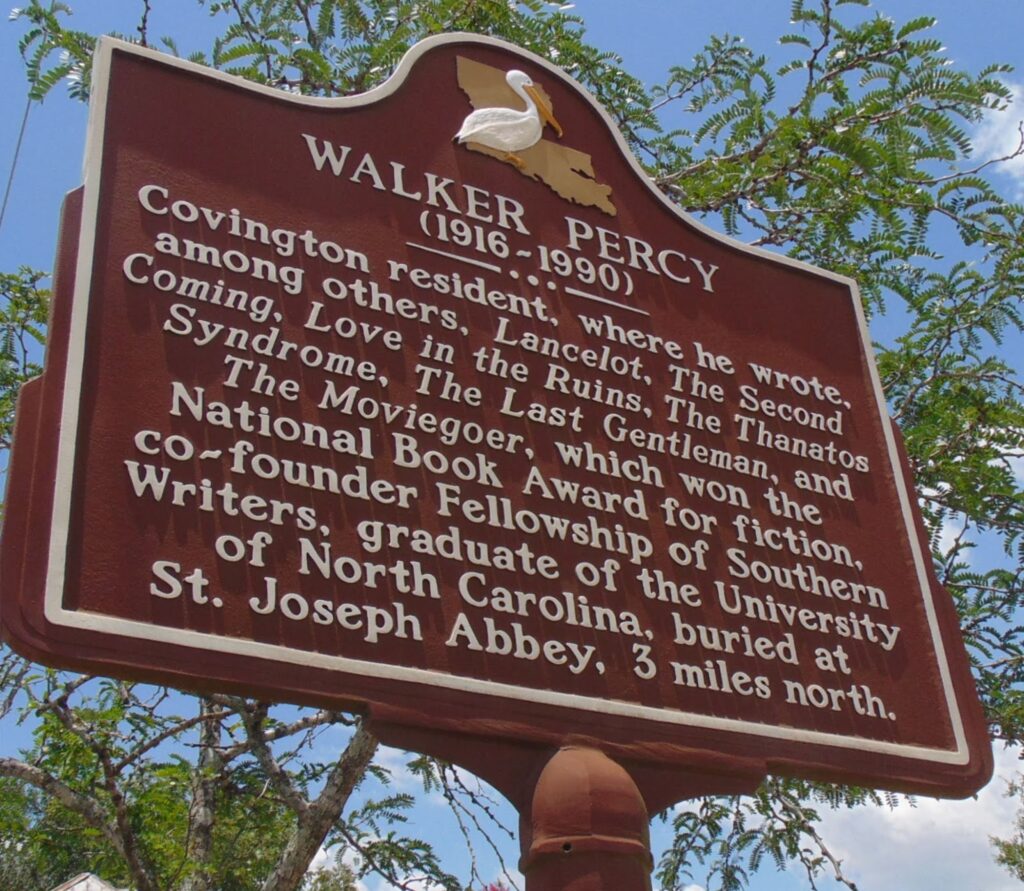
Covington resident, where he wrote, among others, Lancelot, The Second Coming, Love in the Ruins, The Thanatos Syndrome, The Last Gentleman, and The Moviegoer, which won the National Book Award for fiction, co-founder Fellowship of Southern Writers, graduate of the University of North Carolina, buried at St. Joseph Abbey, 3 miles north. Google Maps

This historical marker was placed in Bogue Falaya Park in Covington in August of 2018 to commemorate a new statue of Walker Percy .Also, several historical plaques were placed in front of the Madisonville library to spotlight Walker Percy’s many literary contribuitons. CLICK HERE to see those plaques, which accompany another statue of the famed Covington resident.
CLICK HERE to go to webpage containing the above list.
A new historical marker in Fontainebleau State Park
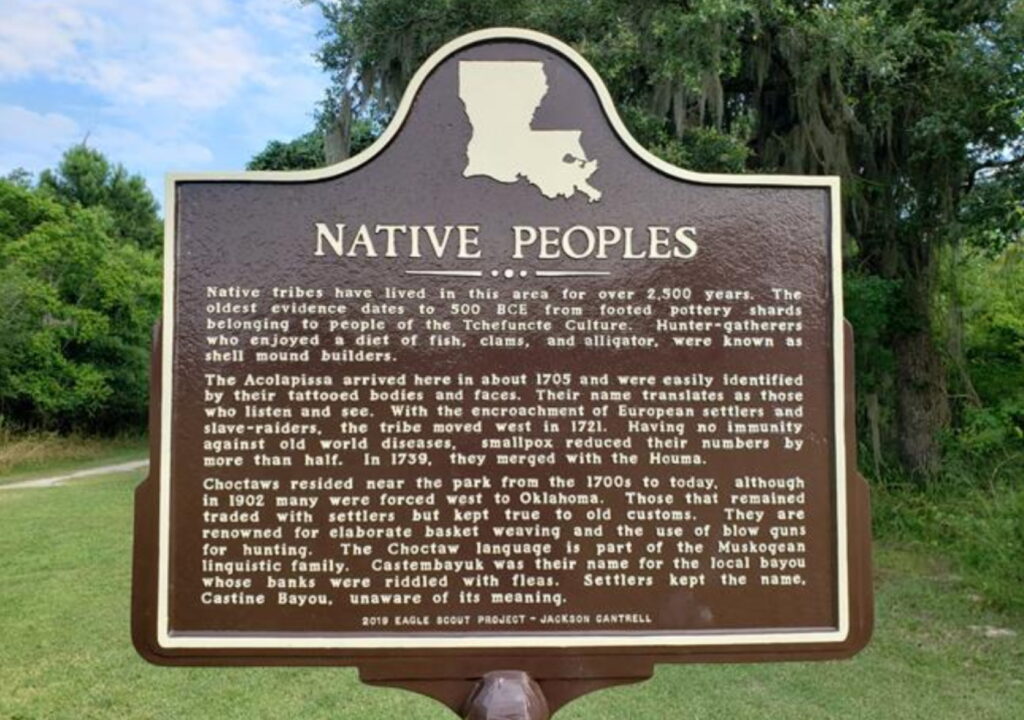
A new historical marker in Bogue Falaya Park, Covington

Read more:

